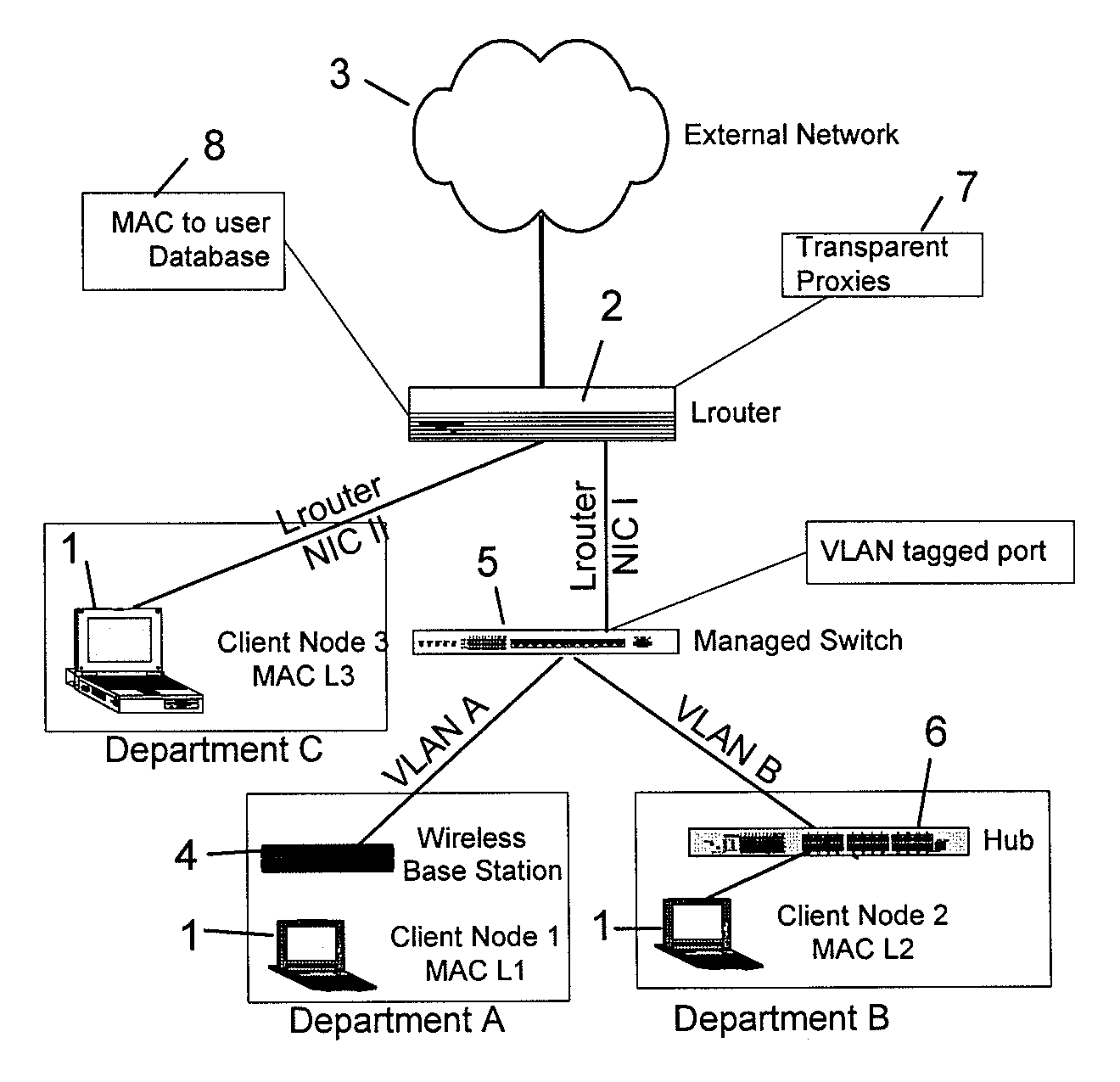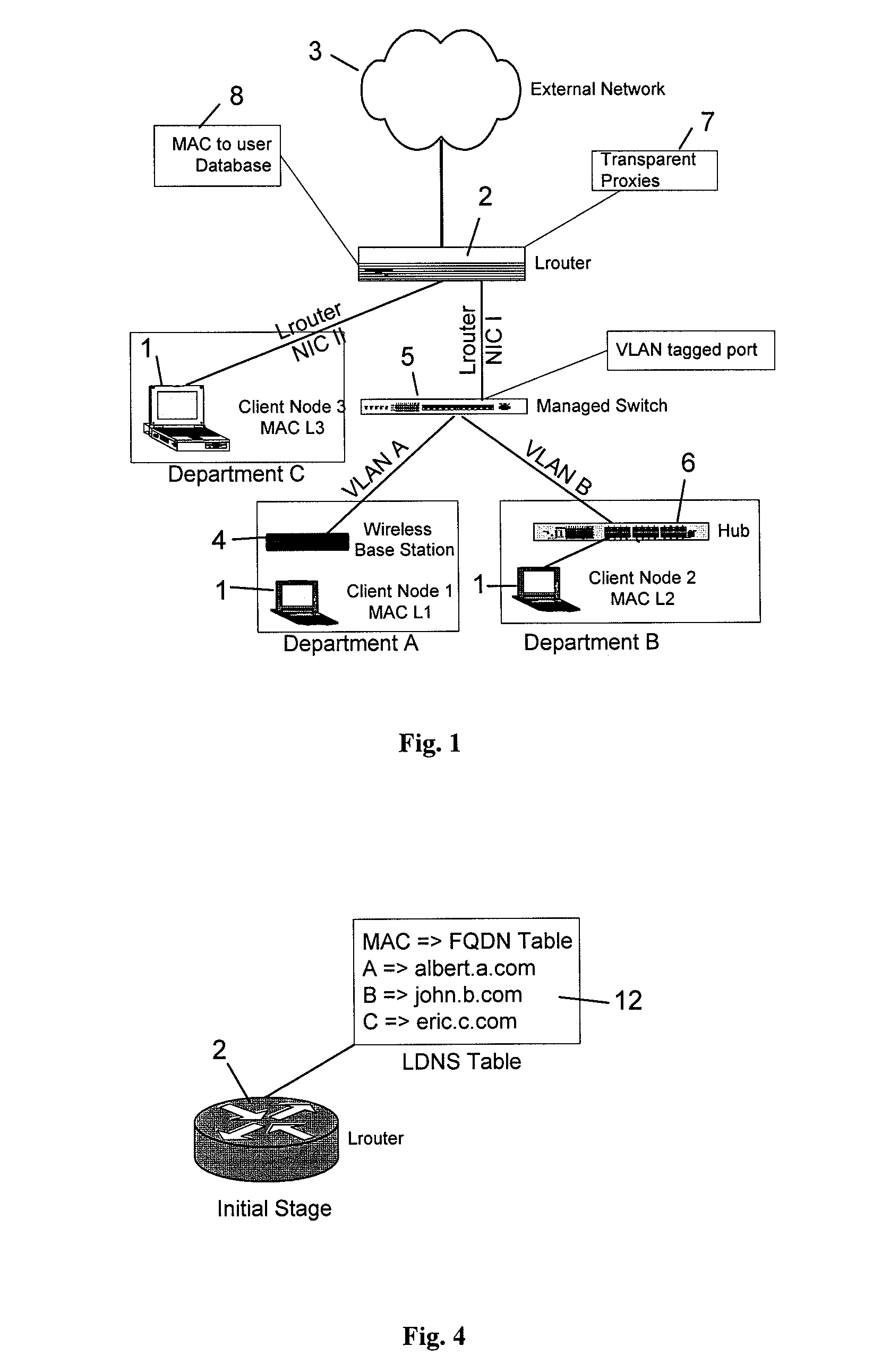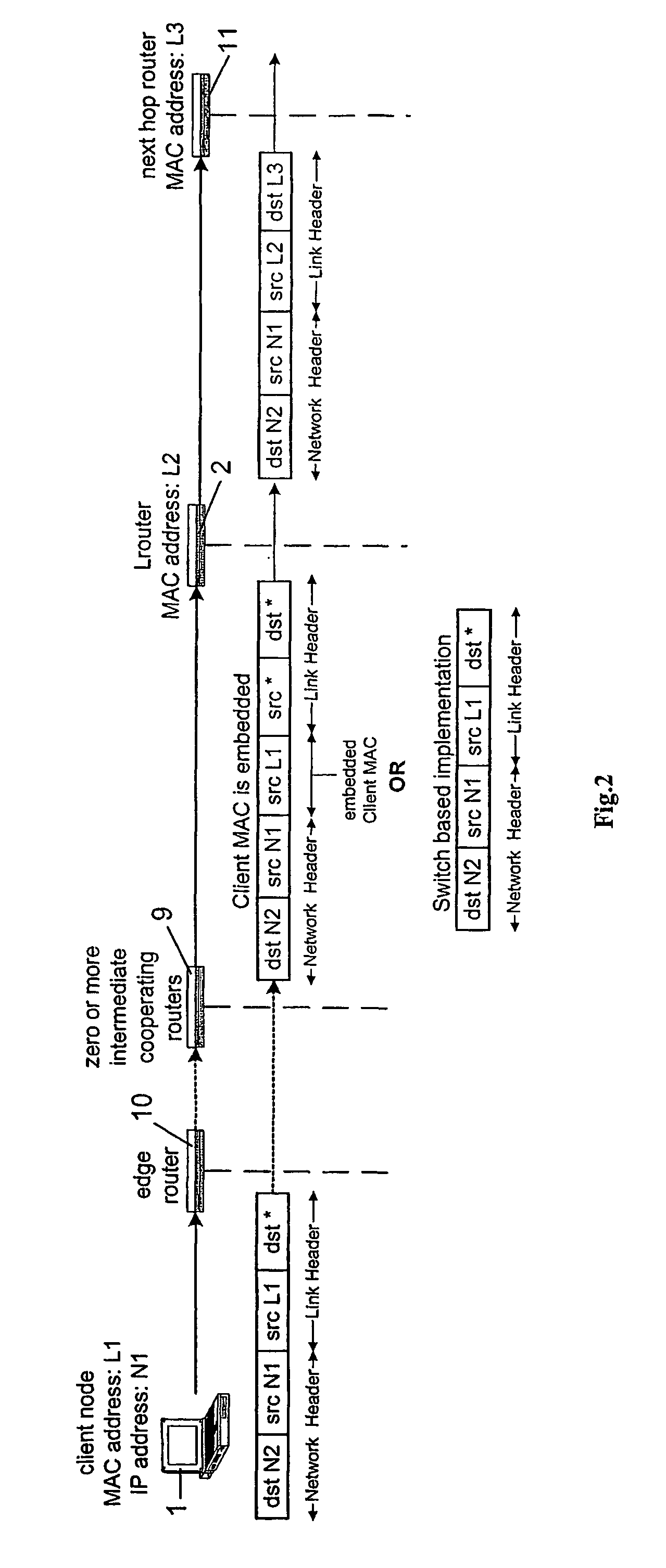Computer network with unique identification
a computer network and unique identification technology, applied in the field of computer networks, can solve the problems of inability to allocate a static ip address to a user, problems in identifying an end user on an intranet, and solutions, however, have their own limitations
- Summary
- Abstract
- Description
- Claims
- Application Information
AI Technical Summary
Benefits of technology
Problems solved by technology
Method used
Image
Examples
Embodiment Construction
[0042]FIG. 1 illustrates one possible network topology for a computer network system incorporating a link aware router in accordance with one embodiment of the present invention, although, of course, many other topologies are possible.
[0043]In FIG. 1, a plurality of client nodes 1 is connected to a router 2, which in turn connects to an external network 3. The external network may take many different forms, and may, for example, comprise the Internet.
[0044]In this example, one of the client nodes, Node 1, connects to a first network card NIC I of the router 2 via a wireless base station 4 and a managed switch 5 having a VLAN tagged port, while a second client node, Node 2, connects to the same router card NIC I via a hub 6 and the managed switch 5. These nodes, Node 1 and Node 2, are in separate virtual LANs, VLAN A and VLAN B, corresponding to, for example, their departments within an organization running the network, and include identifiers in their outgoing data packets to this e...
PUM
 Login to View More
Login to View More Abstract
Description
Claims
Application Information
 Login to View More
Login to View More - R&D
- Intellectual Property
- Life Sciences
- Materials
- Tech Scout
- Unparalleled Data Quality
- Higher Quality Content
- 60% Fewer Hallucinations
Browse by: Latest US Patents, China's latest patents, Technical Efficacy Thesaurus, Application Domain, Technology Topic, Popular Technical Reports.
© 2025 PatSnap. All rights reserved.Legal|Privacy policy|Modern Slavery Act Transparency Statement|Sitemap|About US| Contact US: help@patsnap.com



